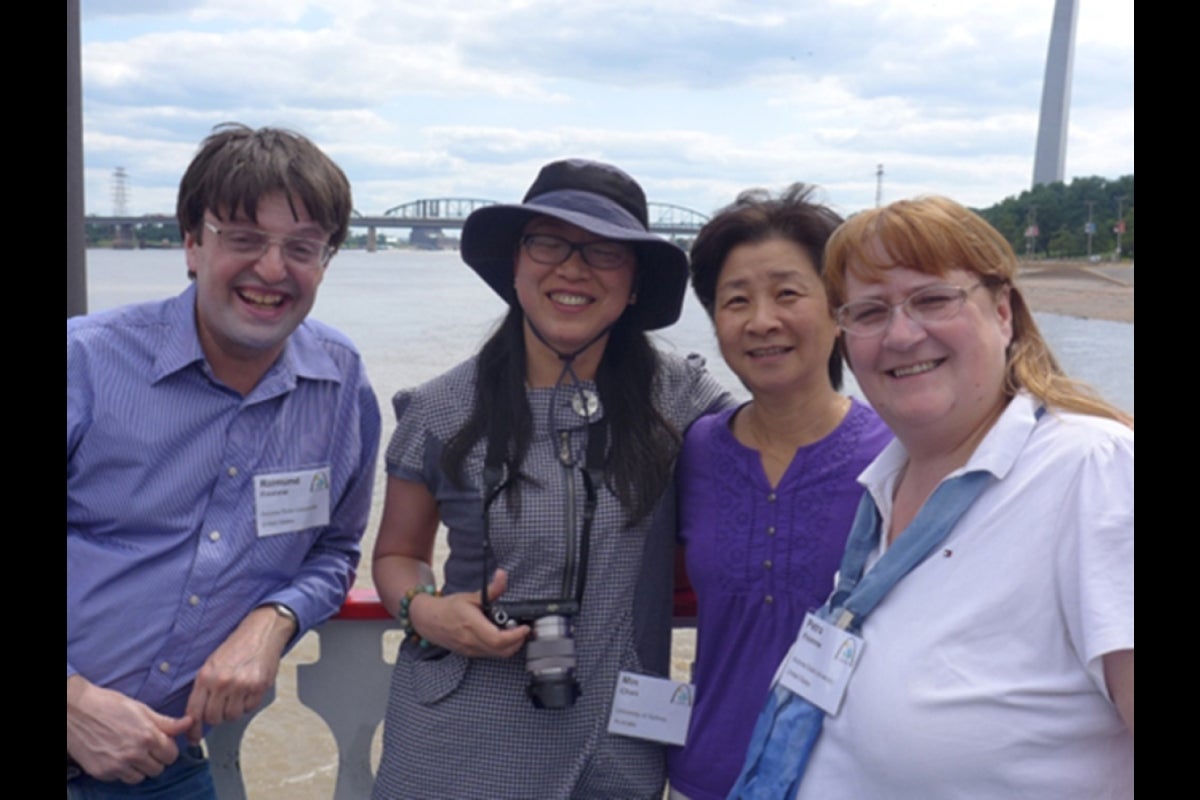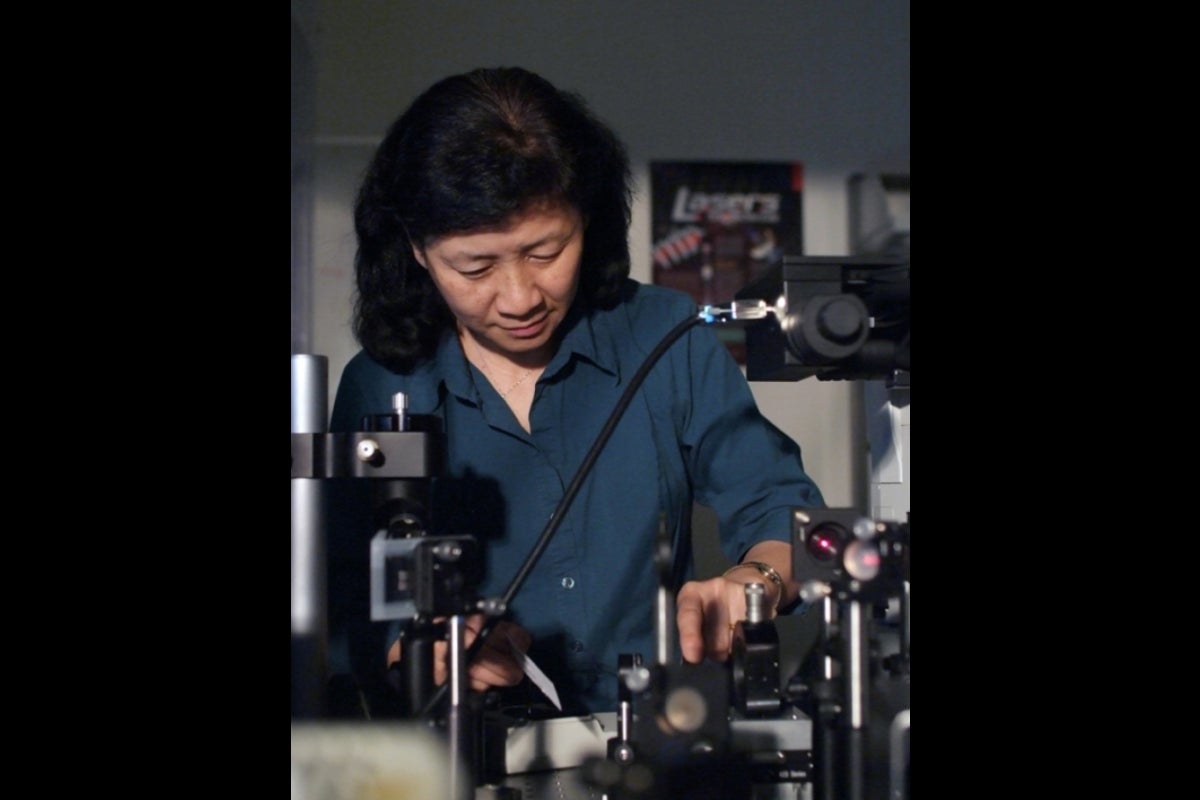Ultrafast Laser Facility director retires after stellar 32-year ASU career

Senior research professional Su Lin. Photo courtesy Mary Zhu
Senior research professional Su Lin has spent 32 years in Arizona State University's School of Molecular Sciences as director of the Ultrafast Laser Facility, now part of ASU’s Core Facilities.
During her time at ASU, Lin has been a mentor and inspiration to many students and colleagues. She is an expert in the development and application of time-resolved laser spectroscopy for chemical, biological and materials research.
Lin retires from ASU this year after a long and illustrious career.
Lin joined ASU in 1991, at a time when the Center for Bioenergy and Photosynthesis was really hitting its stride, and a great deal of interest was centered around the very early events of photosynthesis.
One of the major investments made just prior to that was the creation of the ASU Ultrafast Laser Facility. Lin recalls starting in a laser bay shared with the Physics Department in the B-wing basement of the Bateman Physical Sciences building on the Tempe campus. On her first day, she was so excited she didn’t leave the lab till 9 p.m.
“I was so happy to work with this wonderful group of people; they were and still are very supportive,” Lin said.
“As an assistant professor, I was working to build the Ultrafast Laser Facility but desperately needed someone with extraordinary technical capability to work with me and to help other users from the center access the state of the art equipment,” said Neal Woodbury, professor and vice president and chief science and technology officer at ASU Knowledge Enterprise.
“... Ultrafast lasers in those days were very delicate and finicky devices that required tremendous patience and care to keep them running and deep understanding to know how that would reflect on the laboratory results obtained,” Woodbury said.
Consequently, the laser lab initially was not really a facility at all, but a collection of lasers and equipment that only a few people could access.
“Then Su came. Having her in the lab nearly 24/7 made the facility work," Woodbury said.
"Protocols were developed. More stable conditions were achieved. Students and postdocs were trained. Grants were written, and additional equipment was purchased. Quickly the facility became world class and probably the best of its kind for biological energy and electron transfer measurements in the U.S. Suddenly, instead of 70% downtime, there was 90% uptime, and many different groups were using the facility and writing papers,” Woodbury said.
But Lin did more than just make the equipment work. She created analysis tools and helped labs not as familiar with spectroscopy to design better and more informative experiments. She read the literature and came up with new ideas and hypotheses. She wrote many of the papers and grants. She literally became a vital scientific member of a half-dozen labs, deeply engaged in their research projects. This was how she remained throughout her time at ASU.
Lin received her Bachelor of Science in physics from Beijing Normal University in 1982 and her Master of Science and PhD in physics from the University of Rochester in 1985 and 1990, respectively. From 1990 to 1991, Lin performed postdoctoral research in physical chemistry at Iowa State University.
The other remarkable aspect of Lin’s leadership of the ultrafast facility is her ability to adapt as technology and science changed. She was always looking for ways to upgrade the facility and make it more accessible to a larger number of researchers. As ultrafast lasers became simpler, she streamlined the less complex systems and automated aspects of them, making room and time for new, cutting-edge equipment and capabilities.
“It is safe to say that Su’s presence at ASU shifted the direction of research of multiple labs and made complex spectroscopy accessible to almost anyone interested in what it could do for them," Woodbury said. "She is an incredible colleague, scientist and friend, and we deeply appreciate all that she has done.”
More Science and technology

Breakthrough copper alloy achieves unprecedented high-temperature performance
A team of researchers from Arizona State University, the U.S. Army Research Laboratory, Lehigh University and Louisiana State…

4 ASU researchers named senior members of the National Academy of Inventors
The National Academy of Inventors recently named four Arizona State University researchers as senior members to the prestigious…

Transforming Arizona’s highways for a smoother drive
Imagine you’re driving down a smooth stretch of road. Your tires have firm traction. There are no potholes you need to swerve to…






